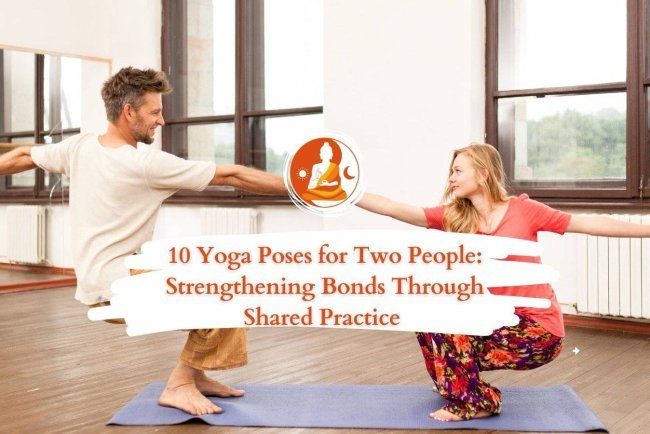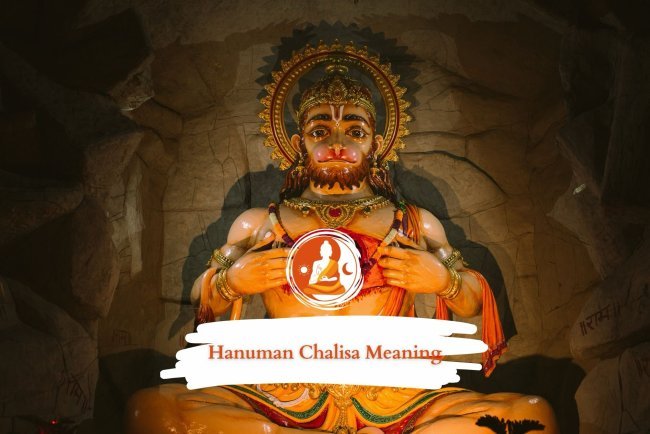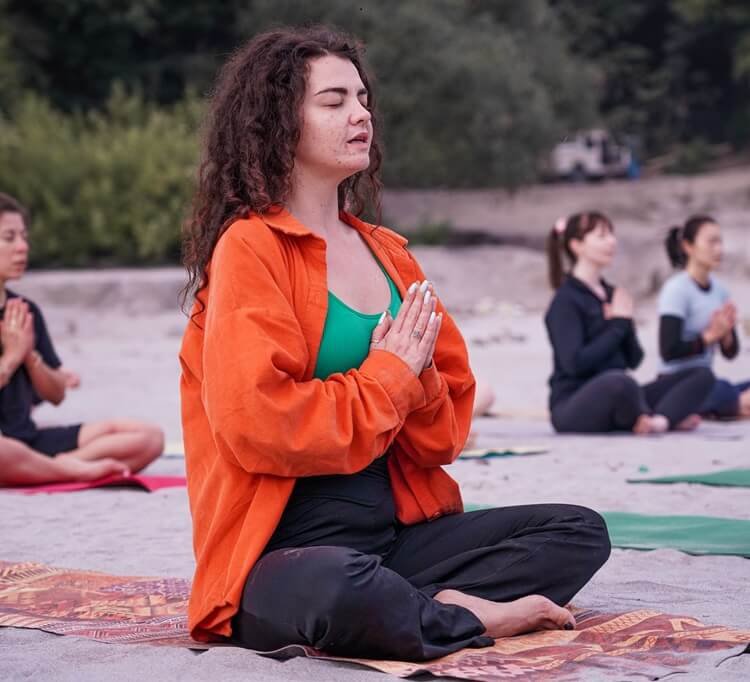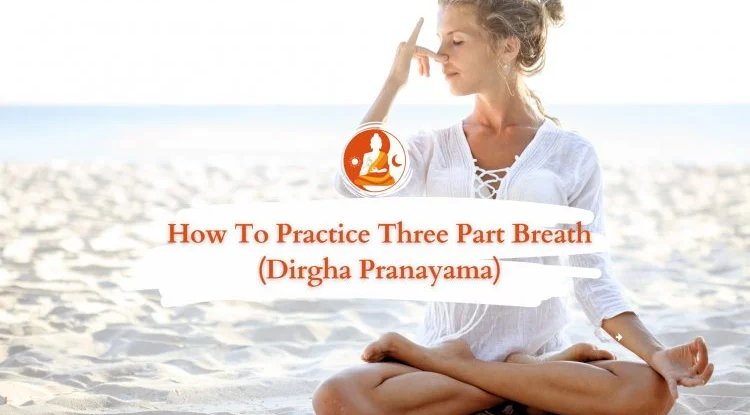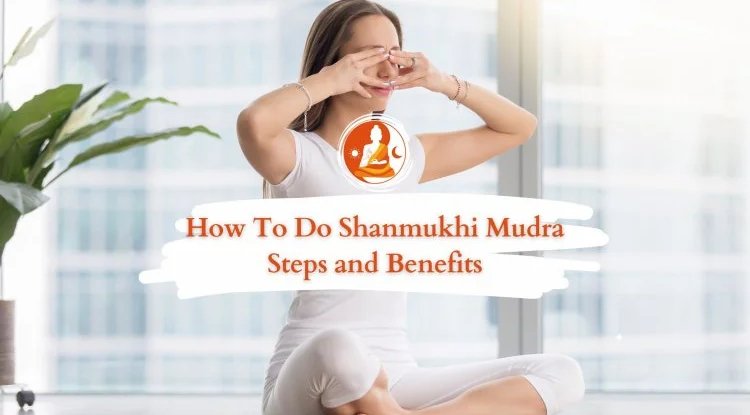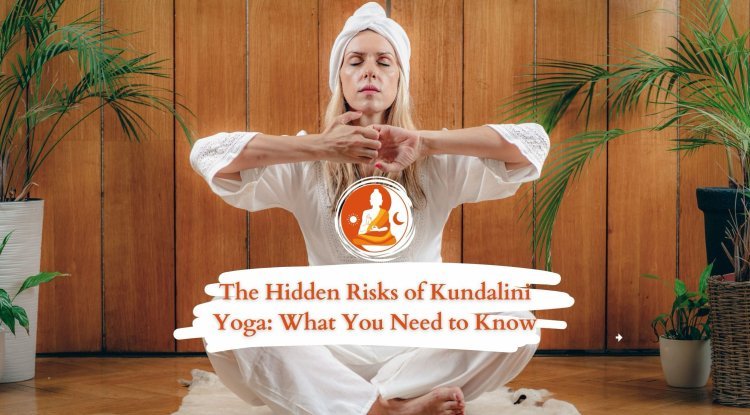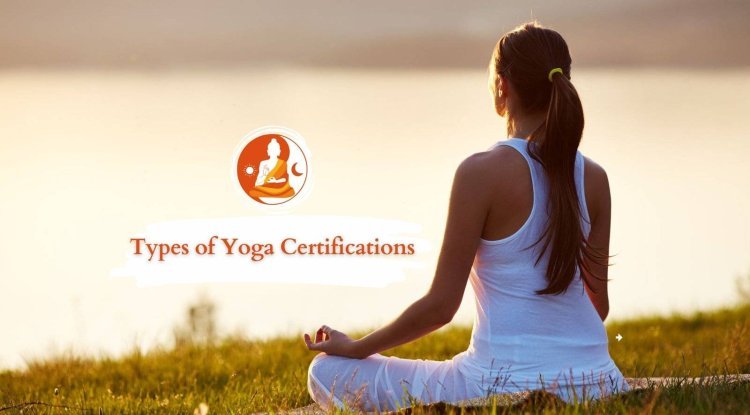Improve Your Balance, Strength, and Calmness with These Yoga Poses On One Leg

An integral part of many yoga practices, standing postures provide a special combination of physical strain and mental concentration. In addition to strengthening certain muscle groups and testing our equilibrium and steadiness, these postures also encourage focus and awareness. Learn the ins and outs of common one legged yoga poses, get insight into their health advantages, and become an expert practitioner with the guidance of this detailed book.
No matter where you are on your yoga journey—a novice trying to find your balance or an experienced practitioner wanting to go deeper—this article will provide you the knowledge and tools you need to become a better single leg yoga practitioner.
Understanding the Importance of Balance in Yoga
The importance of balance in yoga goes much beyond the simple capacity to stand on one foot. It lays the groundwork for general health by integrating the mind, body, and breath in perfect harmony. By forcing students to locate their physical and mental centers, yoga poses on one leg are potent instruments for developing this equilibrium.
Practicing yoga on one leg helps us become more aware of our body position in space, a skill called proprioception. Both our bodily stability and our ability to concentrate are boosted by this heightened awareness. We learn to calm the mind, breathe deeply, and remain in the here and now while we work to keep our balance in various positions.
Balancing on one leg yoga pose is a yoga posture that symbolizes attaining balance in life and is not just about physical strength. Mastering difficult yoga positions helps build mental resilience, which in turn makes it easier to deal with life inevitable ups and downs.
Also Read: Top 10 Yoga Poses for Weight Loss
Benefits of Practicing One Legged Yoga Poses
Many advantages, both on and off the yoga mat, may be yours when you include one legged yoga asana into your routine.
- Better Physical Balance and Stability
- Strength and Tone Improvement
- Better Focus and Clarity
- Better Mobility
- Increased Self Confidence
Essential One Legged Yoga Poses to Master
1. Tree Pose (Vrksasana)
One of the most basic yoga pose standing on one leg, Tree Pose requires you to stand on one leg and helps you develop stability, concentration, and balance. Like a tree, this position encourages stability and expansion by placing one foot firmly on the floor and the other on the inside of the thigh or calf.
Instructions:
- Start in mountain pose with feet together.
- Switch to your left foot and grind through all four corners.
- Slowly elevate your right foot onto your inner left thigh or calf (avoiding the knee).
- Press right foot and left leg to resist.
- Place your hands at your heart in prayer.
- Focus in front of you to stay balanced.
- After 5 to 10 breaths, gently release and swap sides.
Benefits:
- Improves stability and balance
- Increases leg, ankle, and core strength
- Improves concentration
- Stretches inner thighs and hips
- Improving posture and body awareness
Tips:
- Keeping your lifted foot on your ankle or using a wall might help with balance.
- Stability requires core engagement and standing leg strength.
- Hips should be level and front.
- If you are afraid of falling, start near a wall.
- For an extra challenge, close your eyes as you proceed.
Related Blog: How Long Does it Take to Become a Yoga Instructor?
2. Warrior III (Virabhadrasana III)
Warrior III is an intense yoga position one leg that strengthens the whole body while testing your stability on one leg. The body forms a T shape parallel to the ground, like that of a fighter or an aircraft.
Instructions:
- Start standing.
- Transfer weight to your right foot.
- Hinge forward at the hips, elevating your left leg behind you as you drop.
- From head to left toes, draw a straight line parallel to the floor.
- Line up your arms with your torso.
- Brace your core and standing leg.
- Hold for 3-5 breaths, then slowly stand and repeat on other side.
Benefits:
- Improves leg, core, and back strength
- Balance and body awareness improve
- Improves concentration
- Increases hamstring flexibility
- Improves posture and spinal alignment
Tips:
- Maintain a square hip position.
- Balance and lower back protection need strong core engagement.
- If complete extension is difficult, bend your standing leg slightly.
- Keep your arms across your body or stretch them back toward your elevated foot for balance.
- Support yourself with your hands on a wall in front of you.
- Maintain equilibrium by looking at a floor point.
3. Standing Hand to Big Toe Pose (Utthita Hasta Padangusthasana)
Standing on one leg yoga pose, this yoga position is great for developing steadiness and focus because it blends flexibility with balance. Maintaining equilibrium and concentration under duress are both tested.
Instructions:
- Begins in Mountain Pose.
- Transfer weight to your left foot.
- Handhold your big toe as you lift your right foot.
- Hold your right leg straight and slowly stretch it forward.
- Help yourself balance with your left hand on your hip or a wall.
- Stay focused in front of you.
- After 3 to 5 breaths, gently release and swap sides.
Benefits:
- Improves stability and balance
- Increases hip and hamstring flexibility
- Improves core and leg strength
- Improves concentration
- Improves posture and alignment
Tips:
- If your toe is out of reach, strap your foot.
- Stand with your leg slightly bent to maintain balance.
- Strong core engagement helps balance and protects lower back.
- Relax shoulders away from ears.
- Try practicing near a wall for support.
- As you improve, stretch your leg to the side for more difficulty.
4. Eagle Pose (Garudasana)
Eagle Pose is a challenging one leg standing yoga pose that combines balance with a twist, improving focus and body awareness. This pose resembles an eagle with its legs and arms intertwined, promoting concentration and inner calm.
Instructions:
- Start with Mountain Pose.
- Lightly bend your knees and elevate your right foot.
- If feasible, loop your right foot beneath your left leg and cross your right thigh over your left.
- In front of you, cross your elbows, left over right.
- Try to contact palms while wrapping your forearms.
- Sink your hips and elevate your elbows while lowering your shoulders.
- Fix your sight in front of you.
- Unwind after 5 to 8 breaths and repeat on the opposite side.
Benefits:
- Improves attention and balance
- Increases leg, ankle, and core strength
- Shoulder and upper back opening
- Hips, thighs, and upper back stretch
- Improves focus and clarity
Tips:
- For difficult leg wrapping, cross your thighs without hooking your foot.
- Instead of encircling arms, grasp onto opposing shoulders.
- Hold the position with a lengthened spine and engaged core.
- Deep, steady breathing helps you concentrate and balance.
- Focus on one point for balance.
- For an extra challenge, close your eyes as you proceed.
5. Half Moon Pose (Ardha Chandrasana)
Beautiful and challenging, Half Moon Pose is a great way to extend your hips and legs while practicing balancing yoga. The body forms a crescent shape, like a half moon, in this stance.
Instructions:
- Stand with a forward bend.
- Put your right hand on the floor or a block 12 inches in front of your right foot.
- Open your chest to the left and lift your left leg parallel to the floor.
- Let your left arm reach the ceiling.
- Look at your left hand or floor for balance.
- Straighten and engage both legs.
- Hold for 3 to 5 breaths, then gently drop and swap sides.
Benefits:
- Balance and coordination improve
- Increases leg, ankle, and core strength
- Hips open and flexibility increases
- Hamstrings and inner thighs stretch
- Encourages concentration
Tips:
- Try using a block beneath your lower hand to bring the floor closer.
- A micro bend in your standing leg protects your knee.
- Balance and lower back protection need strong core engagement.
- Hips and shoulders should be vertical.
- Practice balancing near a wall for support.
- Challenge yourself by gazing up at your top hand as you go.
6. Dancer Pose (Natarajasana)
A beautiful and difficult balance and backbending posture, Dancer Pose (Natarajasana) is performed with one leg up pose. This dynamic dancer position is great for increasing your flexibility, strength, and concentration.
Instructions:
- Start in Mountain Pose.
- Transfer weight to your left foot.
- Right knee bent, heel to buttocks.
- Right hand, grab right foot outside.
- Inhale and raise your left arm.
- Lift your chest and arch your back as you kick your right foot into your hand.
- Maintain a strong standing leg and core.
- Look forward or somewhat up.
- Hold 3 to 5 breaths, gently release, then repeat on opposite side.
Benefits:
- Improves stability and balance
- Improves leg, core, and back strength
- Improves spine, shoulder, and hip flexibility
- Opens chest, improves posture
- Improves concentration
Tips:
- Use a strap to reach your foot if flexibility is restricted.
- Balance with a slightly bent standing leg.
- Strong core engagement protects the lower back.
- Square your hips and face forward.
- Consider practicing along a wall for support.
- Instead of kicking back, raise through your chest.
7. Standing Split (Urdhva Prasarita Eka Padasana)
The standing split is a dynamic 1 leg up pose that stretches the hamstrings deeply while testing your balance. This is a vertical variation on the split posture.
Instructions:
- Begins in Mountain Pose.
- Hinge forward at the hips, hands on floor or blocks.
- Transfer weight to your right foot.
- Gently elevate your left leg to the ceiling.
- Stand straight with both legs.
- Anchor your hands on the earth.
- Look at your standing foot or floor.
- Hold for 3 to 5 breaths, then gently drop and swap sides.
Benefits:
- Improves stability and balance
- Improves core and leg strength
- Deeply stretches hamstrings and calves
- Improves concentration
- Increases cerebral blood flow
Tips:
- Maintain a modest bend in your standing leg if necessary.
- Bring the floor closer with blocks beneath your hands.
- Use quadriceps to straighten legs.
- Keep your hips level.
- Practice with your back against a wall for support and alignment.
- Move your upper body closer to your standing leg as you go.
8. Figure 4 Pose (Eka Pada Utkatasana)
Figure 4 Pose, also known as Standing Pigeon, is a standing on one leg yoga pose that combines balance with a deep hip opener. This pose resembles the number 4, hence its name.
Instructions:
- Start in mountain pose.
- Left foot weight shift.
- Cross your right ankle across your left leg slightly above the knee.
- Right foot flexion protects the knee.
- Squat by bending your left knee slowly.
- Hands to the heart center or forward for balance.
- Release softly and swap sides after 3 to 5 breaths.
Benefits:
- Better balance and stability
- Stretches glutes and hips
- Strengthens legs, core
- Improves concentration.
- Relaxes lower back
Tips:
- Be sure to plant your foot and activate your leg.
- Bending your standing leg, keep your spine straight.
- Practice balancing beside a wall or chair if needed.
- A deeper stretch is achieved by pressing your crossed ankle into your thigh and vice versa.
- Deep breathing helps balance and deepen the stretch.
- As you grow, squat deeper.
9. Warrior III with Prayer Twist (Parivrtta Virabhadrasana III)
This Warrior III variant takes the traditional one legged balance yoga posture and gives it a modern spin, making it more difficult while expanding the range of motion and strengthening the muscles involved.
Instructions:
- Start with Mountain Pose.
- Enter Warrior III with your left foot back and lifted.
- Hold your hands in prayer at your chest.
- While keeping your hips level, rotate your body right.
- Hook left elbow outside right thigh.
- Longen your spine and move your elevated leg.
- Look down or sideways for balance.
- Untwist and drop softly after 3 to 5 breaths. Flip and repeat.
Benefits:
- Improves stability and balance
- Improves leg, core, and back strength
- Increases spinal mobility and flexibility
- Twisting aids digestion.
- Improves attention and clarity
Tips:
- Keep hips square to the ground while twisting.
- Balance and lower back protection need strong core engagement.
- Keep your back foot in a lunge if the complete posture is difficult.
- Put a block beneath your lower hand for support.
- As you twist, stretch your spine.
- Take long breaths, twisting each inhalation.
10. Standing Bow Pose (Dandayamana Dhanurasana)
An advanced standing yoga posture, Standing Bow Pose involves opening the hips, bending the back, and maintaining balance. Posing in this way tests your flexibility and strength like an archer pulling a bow. It is a lovely form, too.
Instructions:
- Begins in Mountain Pose.
- Transfer weight to your left foot.
- Right knee bent, heel to buttocks.
- Put your right hand inside your right foot or ankle.
- Left arm extended forward and up.
- Lean forward and elevate your chest as you kick your right foot into your hand.
- Make a bow with your body.
- Maintain a strong standing leg and core.
- Look forward or somewhat up.
- Hold 3 to 5 breaths, gently release, then repeat on opposite side.
Benefits:
- Improves stability and balance
- Improves spine, shoulder, and hip flexibility
- Improves leg, core, and back strength
- Opens chest, improves posture
- Improves attention and clarity
Tips:
- Balance with a slightly bent standing leg.
- Strong core engagement protects lower back.
- Bend back to lengthen your spine.
- Square your hips and face forward.
- If your hand cannot reach, strap your foot.
- Consider practicing along a wall for support.
- Improve your back leg lift and chest parallel to the ground.
Also Read: How to Sequence a Yin Yoga Class?
Incorporating One Legged Poses into Your Yoga Routine
Combine these positions in a balanced sequence to maximize your one legged yoga practice. This sequence incorporates one legged standing yoga poses:
Begin with a warm up (5 to 10 minutes):
- Cat Cow stretches
- Gentle twists
- Sun Salutations (2 to 3 rounds)
Standing poses (10 to 15 minutes):
- Mountain Pose
- Warrior I
- Warrior II
- Triangle Pose
One legged poses (15 to 20 minutes):
- Tree Pose (both sides)
- Warrior III (both sides)
- Standing Hand to Big Toe Pose (both sides)
- Eagle Pose (both sides)
- Half Moon Pose (both sides)
Cool down poses (10 to 15 minutes):
- Seated Forward Fold
- Pigeon Pose
- Supine Twist
Final relaxation (5 to 10 minutes):
- Savasana (Corpse Pose)
Overcoming Common Challenges in One Legged Yoga Poses
You could face some typical difficulties when doing yoga positions on one leg. To get over them, consider these suggestions:
Wobbling or losing balance:
- Remain calm and steady faced while you concentrate on breathing.
- Make more use of your abdominal muscles.
- If you are still nervous, try practicing next to a wall for support.
Hip or hamstring tightness:
- Include stretches for the hamstrings and hip opening postures in your routine.
- To change your position, try using straps or blocks.
- Keep at it, and your flexibility will come with time.
Weak ankle muscles:
- Even when you are not doing yoga, try standing on one foot for a time (like when you clean your teeth).
- Be sure to include workouts that strengthen your foot and ankles in your regular program.
- To strengthen your ankles, stand or lean against a wall.
Reluctance to descend:
- Use a yoga mat or carpet as a padded platform for your practice.
- As you learn to balance, remember that falling is normal.
- Keep your attention on the steps rather than the end result.
Struggling to stay concentrated:
- Off the mat, practice mindfulness
- Hold your focus with your breath.
- Hold for shorter periods at first, and then longer ones.
Bottom Lines
Yoga poses on one leg improve balance, strength, and awareness. You will gain body awareness, stability, and yoga depth by practicing these tough yet rewarding asanas. Practice patiently since development takes time.
Mastering these one legged yoga poses will give you balance and confidence beyond yoga. The skills you develop – physical strength, mental focus, and emotional equilibrium – will serve you well in all aspects of life.
Enjoy learning one legged yoga postures and enjoying each tiny gain. Remember that every wobble and tumble is a chance to learn and progress, whether you are practicing Tree Pose or Dancer Pose. The fundamental core of yoga is focused practice and self discovery, not faultless positions.
As you practice yoga positions on one leg you will likely discover advantages beyond the physical. Daily living may enhance your balance, posture, and body awareness. These difficult positions may also help you with life ups and downs by improving your mental concentration and resilience.
Listen to your body, practice with patience and kindness, and enjoy the path of constant development and discovery that one legged yoga postures provide. Whether you are a novice or an established practitioner trying to develop your practice, one legged standing yoga postures have always something fresh to offer.
Step onto your mat, ground down with one foot, and launch into the beautiful, challenging, and gratifying realm of one legged yoga asanas. Your body, mind, and soul will appreciate the adventure.
Questions & Answers
For optimal results, perform one legged postures 2 to 3 times each week. Even weekly practice improves balance and strength.
Numerous one legged positions may be simplified for beginners. Make basic positions like Tree Pose and utilize objects or wall support. Increase the difficulty of postures as your balance and strength increase.
Yes, performing these positions frequently helps enhance balance and body awareness, lowering everyday fall risk. These postures boost proprioception and ankle strength, which is useful.
Hold positions for 3 to 5 breaths, then 5 to 10 as your balance and strength improve. You may aim for 1 to 2 minute holds each side as you go.
If you become dizzy, carefully exit the stance and return to Mountain stance. Breathe deeply before resuming your practice. Consult a doctor if dizziness continues
What's Your Reaction?







